Courtesy : www.disd.edu
Green interior
What is Green Interior Design?
There are three fundamental principles to “green” interior design: energy efficiency, resource conservation, and health. When designing or remodeling an interior, optimizing the energy efficiency reduces pollution and saves resources for the entire lifetime of the interior. While maximizing energy efficiency is sometimes more expensive upfront, in the long term reducing energy consumption saves money and pays for itself.
Designing with resource conservation in mind requires mindful use of limited resources. Designing interiors with a long, adaptable lifetime or with eventual reuse in mind also conserves resources in the long term by reducing the need for remodels or reducing waste in future remodels. Additionally, “green” interior design protects the health of users by designing for wellbeing and the prevention of indoor air pollution. “Green” interior design is forward-thinking, enhancing the lives of users today and in the future, while protecting the environment for years to come.
IS “GREEN” THE SAME THING AS SUSTAINABLE?
The two terms are often used interchangeably, but the two words have slightly different connotations. In The Green Studio Handbook, Alison G. Kwok and Walter Grondzik note their preference for “green” as term with a definition established through its use in rating systems such as GGBC. Through the guidelines for these rigorous rating systems, we know exactly what qualifies as “green” and what does not, giving us a practical, working definition for what is “green” today. Overtime, as environmentally conscious practices become mainstream, what is considered “green” changes.
It is harder to determine when something meets the definition of sustainable as it is more of an aspirational mindset than a technical standard. In the American Society of Interior Designers’ Sustainable Residential Interiors, Annette K. Stelmack adapts the World Congress of Architects’ definition of sustainability to: “meeting or satisfying the needs of the current generation without diminishing or compromising the ability of future generations to meet their own needs.” As this definition is based on ideals rather than practical considerations for what is considered possible today, it remains constant over time. Something that is truly sustainable today will continue to be considered sustainable in the future.
At Design Institute of San Diego, we prefer to use sustainable over “green.” Concerned with both environmental impact and social responsibility more broadly, we consider “green” standards to be a bare minimum and aspire to be leaders in environmental design, pushing the boundaries of eco friendly design and striving toward the goal of truly sustainable interior design.
Whatever language you use to describe it, sustainable design is imperative. The good news is, no matter what your personal style, you do not need to compromise. Sustainable interior design is possible in any style, from Neoclassical to mid-century modern, and everything in between.
TWELVE EXAMPLES OF SUSTAINABLE DESIGN
AVOID VOLATILE ORGANIC COMPOUNDS
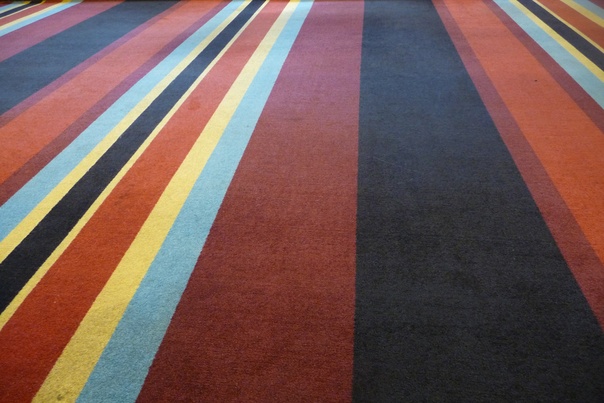
Selecting the right carpet can help you breathe easier.
Respiratory health is crucial right now. Protect your lungs! Off-gassing of volatile organic compounds is a serious concern with paints and carpets. Make sure your products and materials are no or low VOC to preserve the air quality of your home or office and breathe more easily.
MATERIAL REUSE
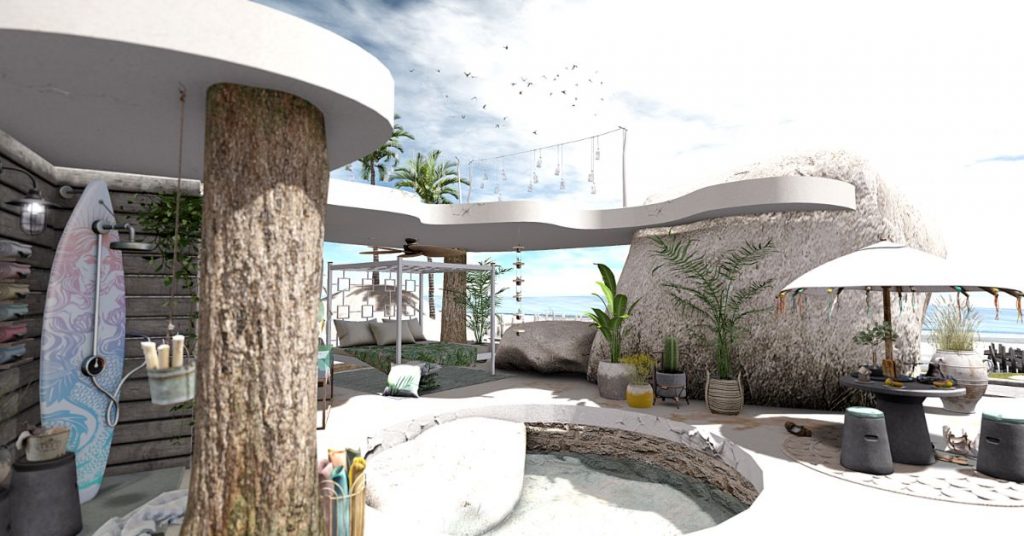
Here, a reclaimed surfboard makes a charming wall for an outdoor shower.
Remember the environmentally conscious adage “Reduce, Reuse, Recycle?” Durable materials such as construction materials can be reused to give them a second life, sometimes in surprising ways Want to learn more? Mark Gorgolewski explores many options for material reuse in Resource Salvation: The Architecture of Reuse.
SELECT ENERGY-EFFICIENT APPLIANCES BUILT TO LAST
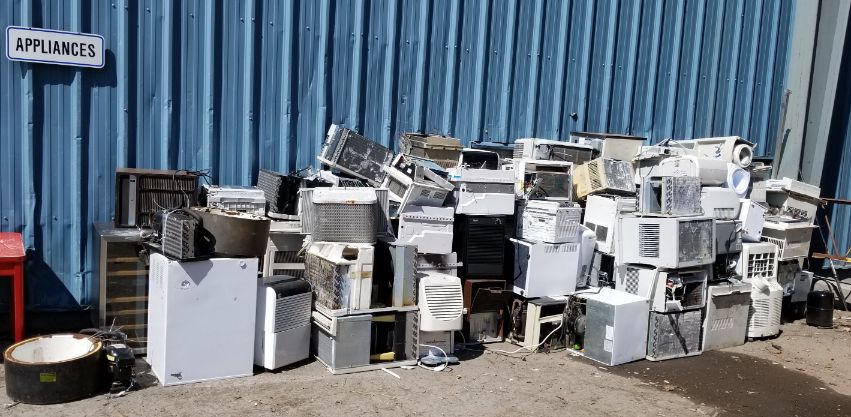
Appliances awaiting recycling, appliances are difficult to recycle.
You do not want to cut corners to save money when buying an appliance. Improvements in technology means that updating your appliances can do wonders for your energy consumption. However, many appliances are difficult to recycle. This means that the eco-friendly way to update your appliances is to get the best quality, most energy-efficient option. By buying quality appliances built to last rather than inexpensive appliances that need frequent replacement, you are minimizing your environmental impact by reducing energy consumption and by reducing future waste. Over time, you will end up saving money with the energy savings and long life of your appliance.
CONSIDER THE LIFE-CYCLE OF MATERIALS
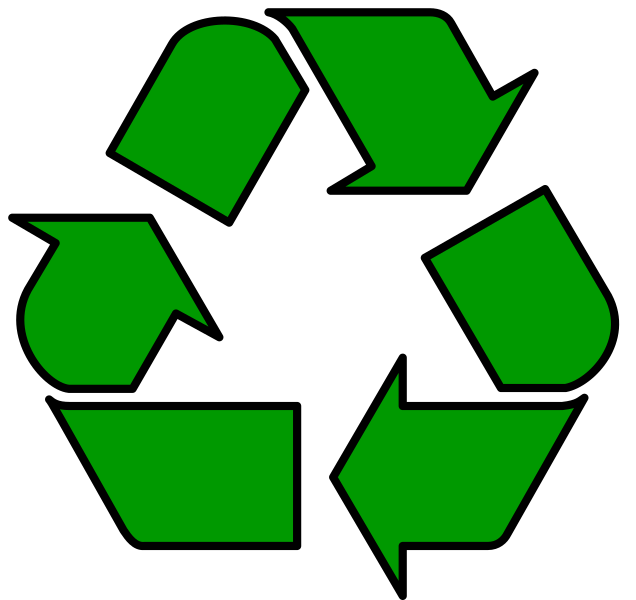
Ideally, a product is environmentally responsible from cradle (harvest or manufacture) to cradle (eventual recycling and reuse).
The life-cycle of materials is very complex. A product may be energy-efficient and long-lasting, but impossible to recycle or repurpose at the end of its life. Or, a product may be easily repurposed but the harvesting or manufacturing process involved environmental degradation. There are several third-party certifications that analyze the life-cycle assessment of products. These include Cradle to Cradle, Environmentally Preferable Product, Environmental Product Declaration, and SMaRT Certified.
HEAT YOUR HOME WITH INDIRECT GAIN
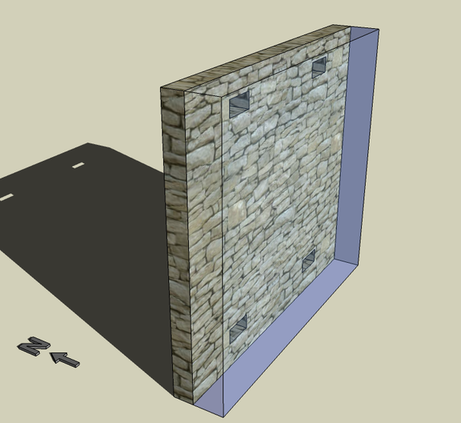
This rendering demonstrates a Trombe wall, a wall with masonry that stores and diffuses heat passively.
There are many clever ways to heat your home and save energy. That’s a good thing, because heating is one of the most energy intensive needs of single-family homes. One way to heat your home through passive solar heating is indirect gain. Through this system, a thermal storage wall stores energy from the sun. If you have a south-facing wall, you could be a candidate for a wall with masonry or water to diffuse all that fantastic heat throughout your home.
ENERGY RECOVERY SYSTEMS
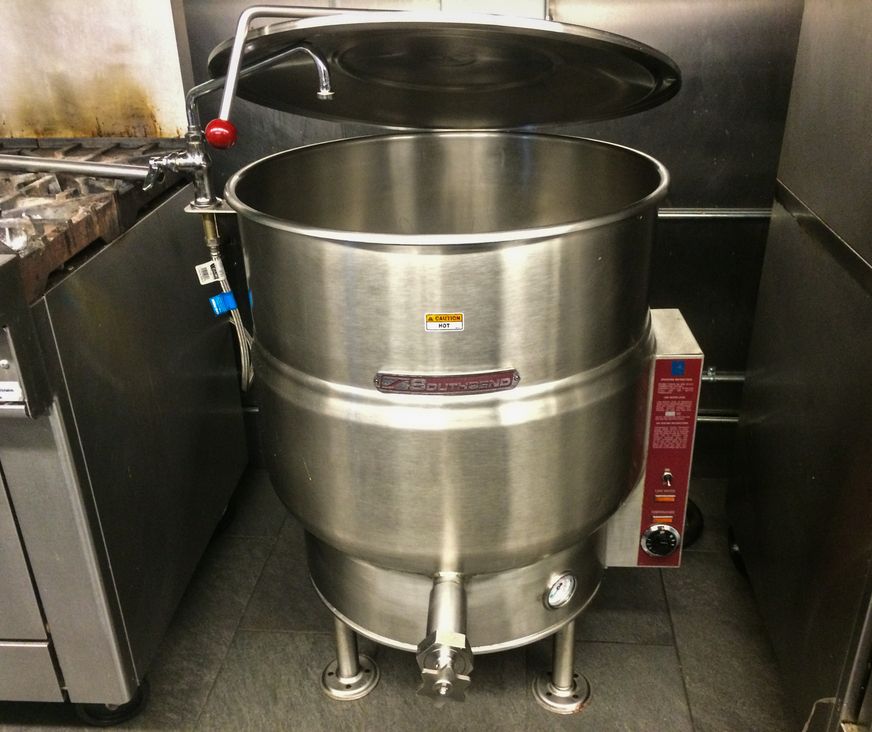
The heat from an industrial appliance can be harnessed to power other functions.
In an office or industrial setting, waste heat can be harnessed using heat exchangers. These systems are custom designed to the particulars of the activities and building, so a well-educated interior designer is needed to find the best opportunities for an energy recovery system. This can range from as simple as capturing the excess heat generated by an oven in an industrial kitchen to boil water for use, to much more complex or opaque systems.
COOL BUILDINGS NATURALLY
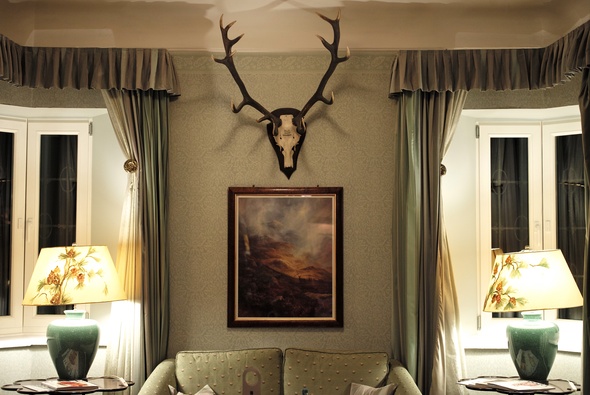
Reducing energy consumption can be as simple as updating window treatments to reduce heat transmission.
The biggest offender for energy use is cooling buildings, especially large buildings. With smart interior design, you can save energy by eliminating the need to climate control or by making use of mechanical cooling. There are many options depending on the size and shape of the building. One of the most common is cross ventilation to remove warm air, which works best when the interior is warmer than the outdoor air.
DAYLIGHTING
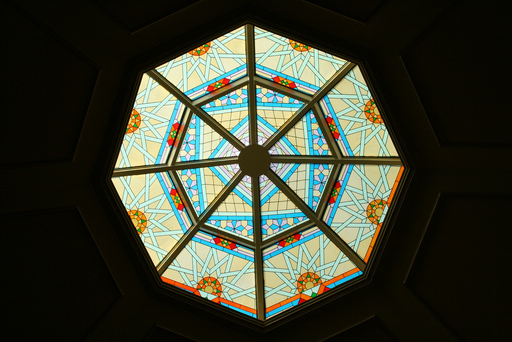
Skylights are a beautiful source of daylighting.
When possible, utilizing natural light can replace energy costs of lighting, while providing some healthy support to your circadian rhythm by bringing you more in tune to the outside world. Working in daylight may even make you more productive! Make sure windows are high-performing to not leak energy. An interior designer can help you determine what options are possible in your location and how to best reduce glare for your situation.
MAKE YOUR WINDOWS BIRD FRIENDLY

Birds are drawn to windows, making windows a common and serious hazard.
Sustainable design includes protecting local wildlife. Windows are the biggest source of avian mortality resulting from collisions. The Audubon Society has recommendations for how to make your windows less attractive to birds, which can be as simple as hanging décor in your window and moving your houseplants away from directly in front of the window. Check with your local Audubon Society for information on your local standards. For example, the Golden Gate Audubon Society worked with the city of San Francisco to develop local recommendations.
MINIMIZE LIGHT POLLUTION
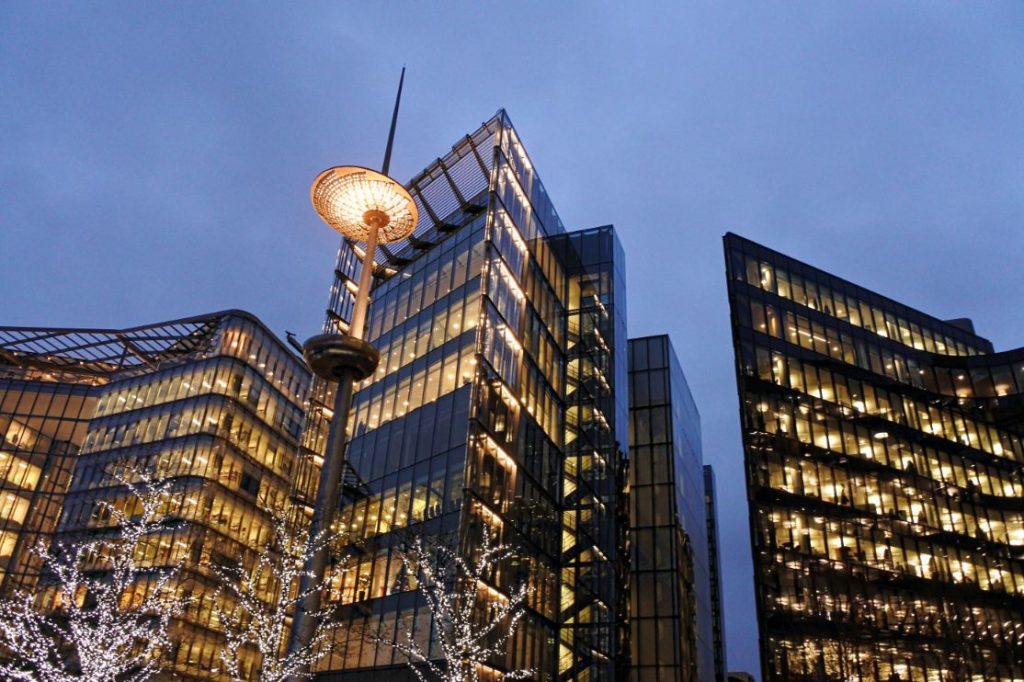
Light visible from your home in the evening and night can disturb local wildlife.
Take a look at how much light trespasses to the outside world from inside your home at night. Find ways to reduce your light pollution to help local wildlife. While you are at it, make sure to minimize your blue light usage at night while you are at it to improve your sleep. Check out the International Dark Sky Association for more information.
MAKE USE OF GRAYWATER

Relatively clean water such as from cleaning dishes can be reused to water plants.
Graywater is the reuse of water leftover from dishwashing, laundry, bathing, and light cleaning when plant-safe soap is used. Using graywater can be as low-tech as collecting water in a bucket with which to water plants. However, if you are remodeling, you can also design a graywater system to automatically collect the graywater for landscaping. Local government often regulates graywater systems, so a designer can help you navigate what is possible in your area.
WATER-EFFICIENT FIXTURES
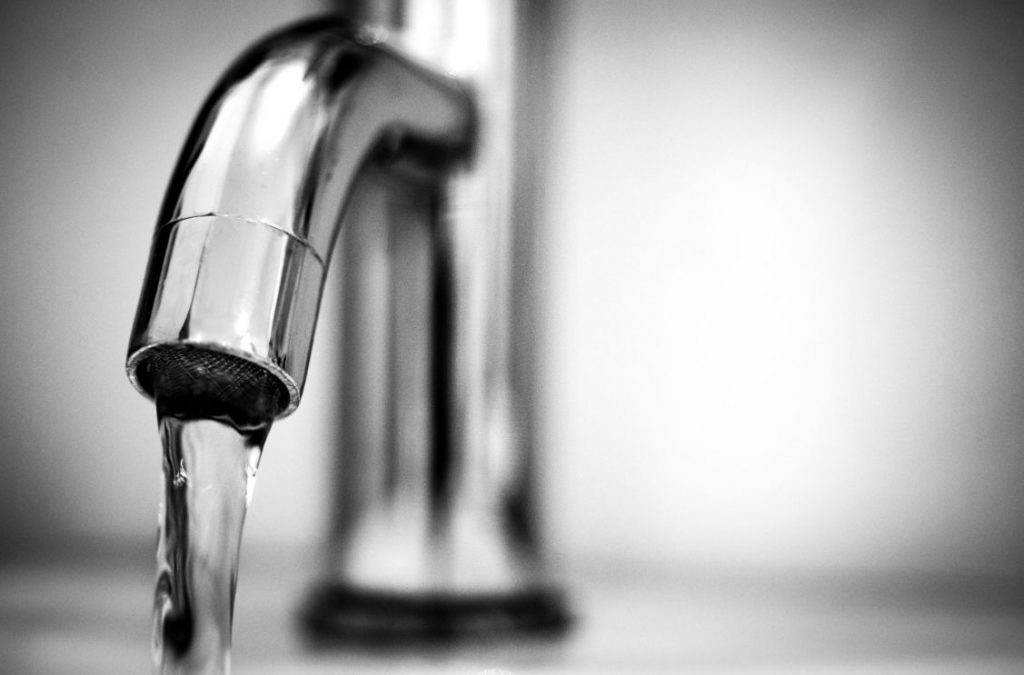
Toilets and showers are the worst offenders, but every drop counts! Don’t forget about faucets.
In the home, no room uses more water than the bathroom. Take this excuse to pamper yourself and update your bathroom. Modernize your bathroom to make it feel like an oasis and replace your fixtures with water-efficient fixtures. Make sure to recycle your old fixtures.



